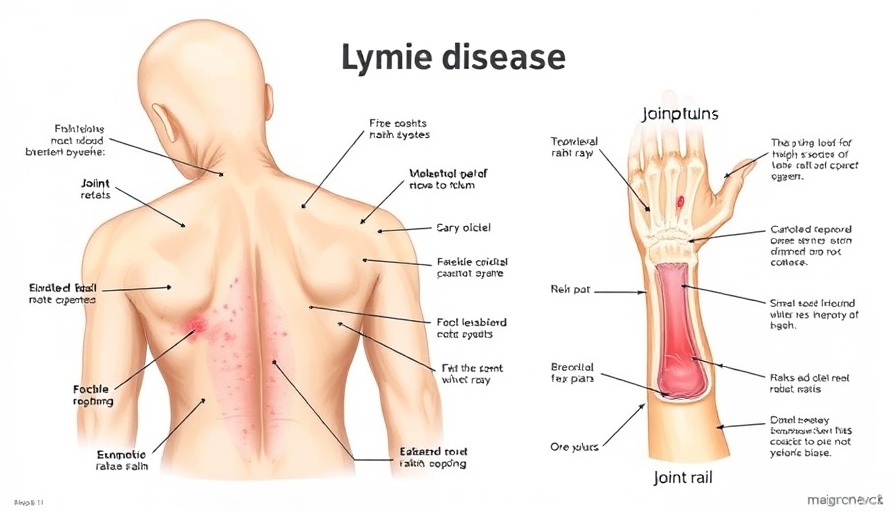
Understanding Lyme Disease: A Growing Concern
Recently, pop star Justin Timberlake opened up about his battle with Lyme disease, shedding light on a condition that often flies under the radar. Lyme disease, transmitted through tick bites, is becoming increasingly common, yet many remain unaware of its symptoms and implications. As we delve deeper into this health issue, it's essential to recognize how Lyme disease can affect older adults in particular.
Recognizing the Symptoms Early
Lyme disease symptoms can vary widely, making early detection a challenge. Common early signs include fever, fatigue, headaches, and joint pain. A distinctive rash often emerges in a "bull's-eye" pattern around the tick bite, but this is not always present—leading many to overlook the condition early on. For older adults, these symptoms can mimic other health issues, complicating the diagnosis. In fact, many individuals might attribute their discomfort to normal aging rather than a treatable illness.
The Importance of Awareness
Awareness is crucial, particularly after Timberlake’s revelation. It serves as a reminder to regularly check for ticks after spending time outdoors, especially in wooded or grassy areas. Learning how to effectively check for ticks and understanding the right steps to take if one is found can be invaluable for older adults who often enjoy outdoor activities.
The Path Forward: Prevention and Treatment
Preventive measures go a long way in avoiding Lyme disease. Wearing protective clothing, using insect repellent, and conducting thorough tick checks immediately after outdoor activities are vital steps everyone should take. If Lyme disease is suspected, treatments usually involve antibiotics, especially when caught early. For older adults, it’s essential to consult with a healthcare provider promptly to discuss any concerning symptoms and pursue necessary tests.
Resilience and Recovery
For those diagnosed with Lyme disease, recovery can be a journey. Timberlake’s experience emphasizes the need for resilience and support in navigating the challenges of the illness. Older adults should remember that physical activity, good nutrition, and mental well-being play a vital role in recovery and ongoing health management post-treatment.
The Importance of Community and Support
Living with Lyme disease can be isolating, but community support is crucial. Older adults can benefit from sharing experiences with others who have faced similar challenges, potentially through local support groups or online forums. These platforms offer valuable resources and encouragement as individuals navigate their health journeys together.
Final Thoughts: What We Can Learn
Justin Timberlake’s revelation about his struggle with Lyme disease serves as an urgent call to action for us all—especially older adults. By staying informed, recognizing symptoms early, and engaging in preventive measures, we can equip ourselves and our loved ones with the tools needed to address this growing health concern. Take the time to educate yourself and those around you about Lyme disease. Together, we can build a more informed and health-conscious community.
 Rij toevoegen
Rij toevoegen






Write A Comment